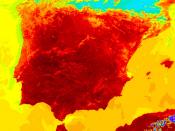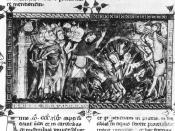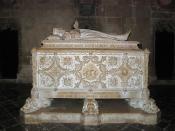Chapter 10
1. What were the causes and results of the Black Death, the peasant revolts, and the Hundred Years' War?
The cause of the Black Plague was trade. It originated in the Gobi Desert of Mongolia where it was common among the rodents and fleas there. One of the animals carried it to China and from there it spread around the sea routes and then moved inward. Once contracted, a person died within a week. Because of fluctuating economic problems caused by people leaving their jobs to be isolated and safe from the plague, revolts and rebellions started to break out because of hardships on the poor. The Hundred Years' War was actually caused by problems dating back to the 1290's. There were quite a few reasons behind the series of conflicts but the main one being the problem of French territory being held by the English kings.
The result of all three of these was finding new ways to survive, significantly decreased populations, and dealing with dislocation throughout Europe.
2. How did each of them affect medieval life and the growth of modern states?
The Black Death, peasant revolts, and the Hundred Years' War all effected medieval life and the growth of modern states. The resulting labor shortages, because of all of the deaths, encouraged European entrepreneurs to experiment with laborsaving technologies and new crops. The wars and revolts led people to become more militarily inventive. It also caused the government to tax more so that money could be put into ships, cannons, armies, weapons, and other military needs. With fewer people there was also a higher per-capita wealth. This led to more time and effort being spent on arts and learning and less spent on survival. Dislocation from the plague and the wars was difficult on...


